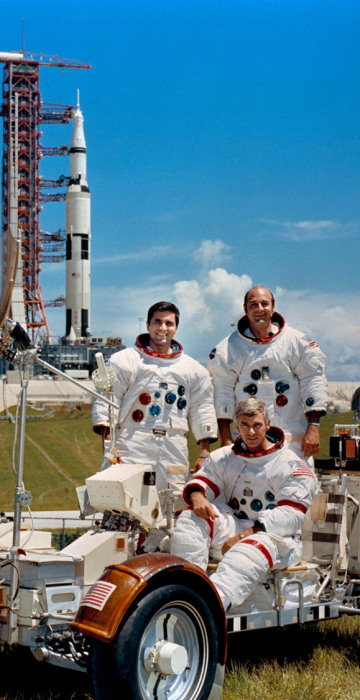
Science News
The last moonshot: Apollo 17

The last moon crew
The Apollo 17 mission in 1972 marked the last time that humans walked on the moon. The mission's commander was Gene Cernan (seated), a veteran of the Gemini 9A and Apollo 10 missions. Harrison "Jack" Schmitt (standing, left) was lunar module pilot, and Ronald Evans (right) was command module pilot. The crew members were photographed here with a lunar roving vehicle trainer. Apollo 17's Saturn 5 rocket is in the background at Launch Complex 39A at Kennedy Space Center in Florida. The mission patch at upper left is dominated by the image of Apollo, the Greek sun god.
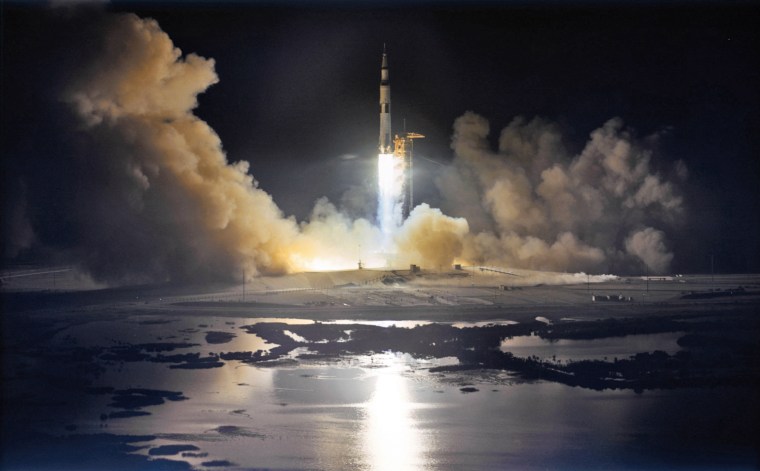

Blue Marble
Apollo 17's crew captured this picture looking back at Earth as they traveled toward the moon in December 1972. This was the first time the Apollo trajectory made it possible to photograph the south polar ice cap. The "Blue Marble" photo is one of the most famous pictures of Earth's full disk.
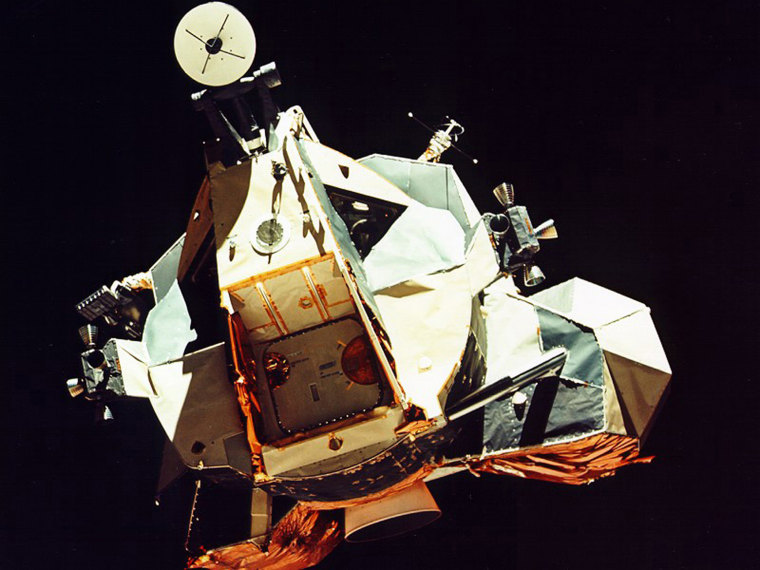
Apollo 17's moonship
Awkward and angular looking, Apollo 17's lunar module, dubbed Challenger, was designed for flight in the vacuum of space. This picture, taken from the America command module, shows Challenger's ascent stage in lunar orbit. This spaceship performed gracefully, landing on the moon on Dec. 11, 1972. Forty years later, the descent stage remains at Apollo 17's lunar landing site. The ascent stage, however, was jettisoned from the command module prior to the return to Earth - and crashed onto the lunar surface.
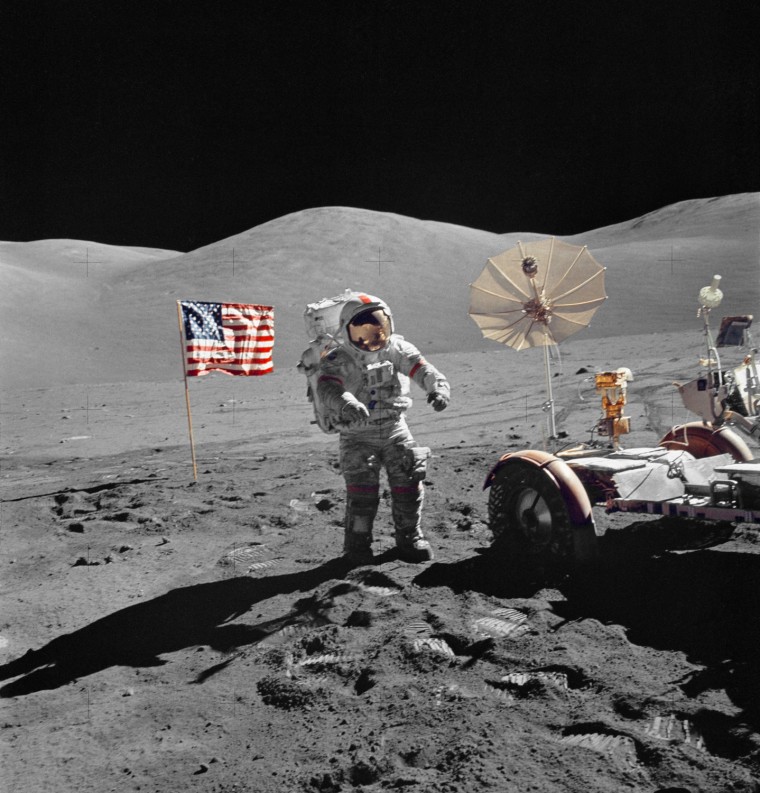
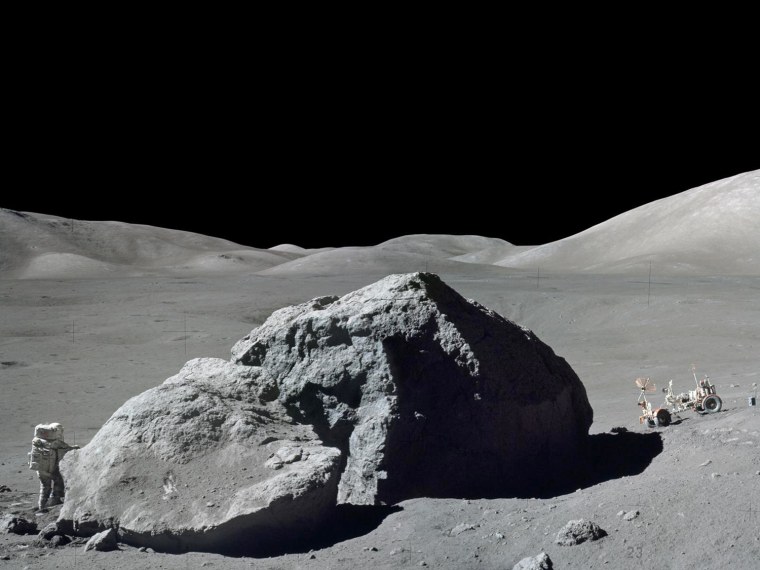
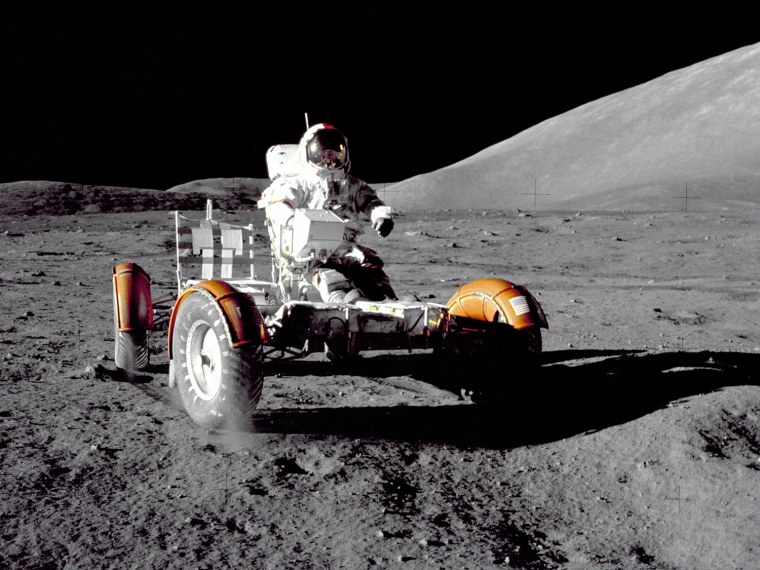
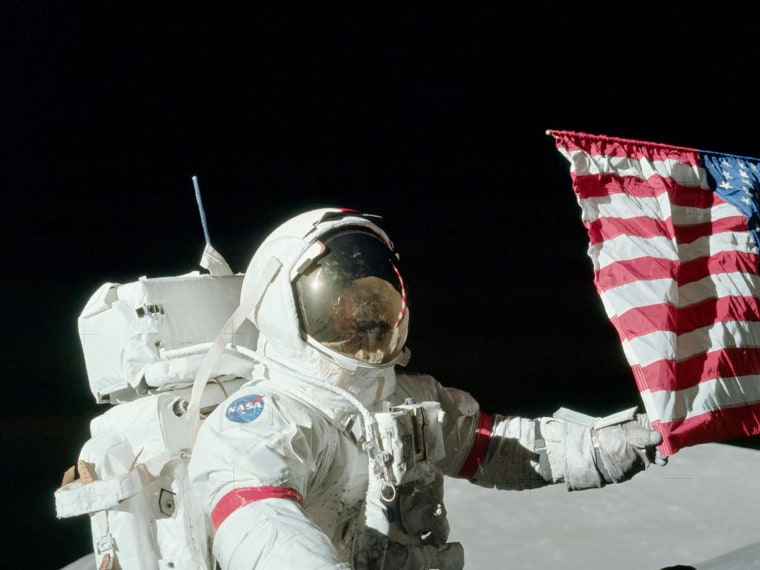
Showing the flag
Apollo 17 commander Gene Cernan holds the lower corner of the American flag during the mission's first moonwalk on Dec. 12, 1972. Imagery from NASA's Lunar Reconnaissance Orbiter suggests that the flag is still standing.
More about the flag from Lunar Surface Journal
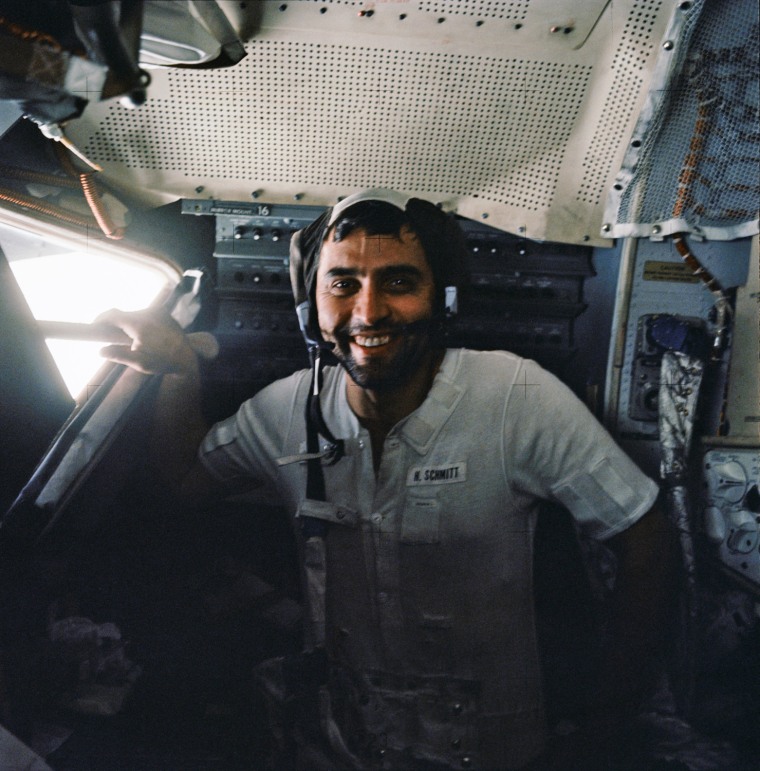
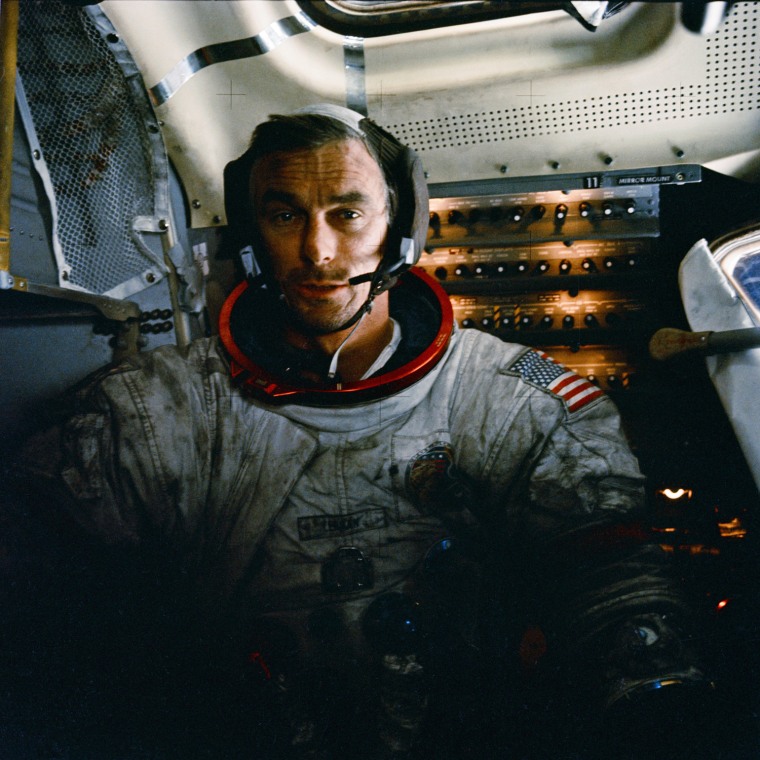
The commander
Apollo 17 commander Gene Cernan is photographed inside the lunar module on the moon's surface after the mission's second moonwalk. His spacesuit is grimy with moondust. The photograph was taken by astronaut Harrison Schmitt, lunar module pilot, using a handheld Hasselblad camera with a 70mm lens.
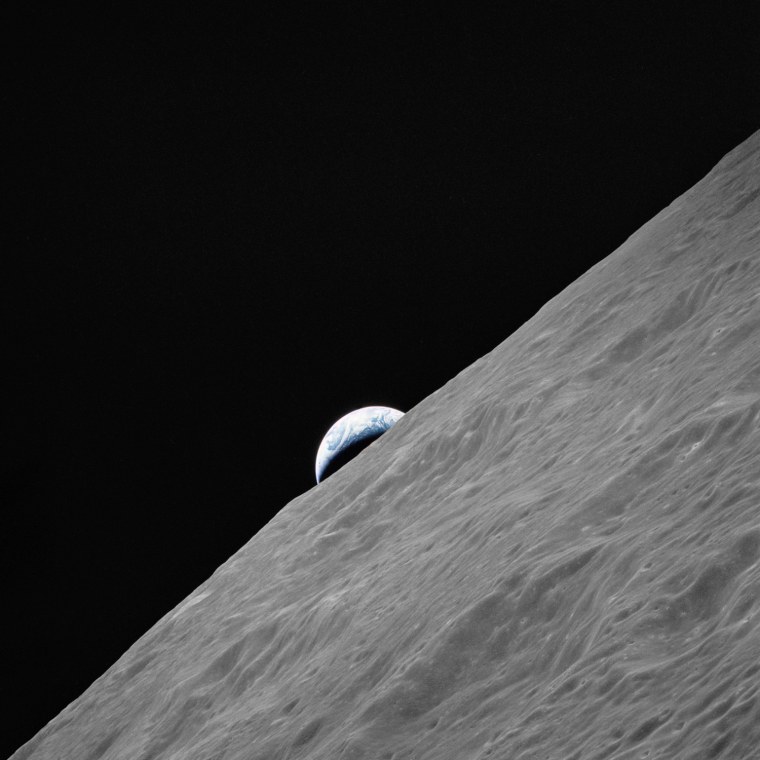

Splashdown!
The Apollo 17 spacecraft, containing astronauts Gene Cernan, Ronald Evans and Harrison Schmitt, glides to a safe splashdown at 2:25 p.m. ET on Dec. 19, 1972, about 350 nautical miles southeast of American Samoa. The astronauts were flown by recovery helicopter to the USS Ticonderoga, slightly less than an hour after the completion of NASA's last manned lunar mission.